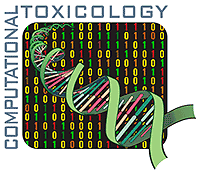Headlines
- Computational Toxicology Rotational Fellowship Program Document (PDF, 15 pp., 122 kb)
- ToxCast™ News
- MOU Between NCCT and HIHS on ToxCast™ Research (PDF, 6 pp., 354 kb)
- Info on Informatics
 View previous articles
View previous articles
The National Center for Computational Toxicology (NCCT) is a part of EPA's Office of Research and Development (ORD). Located in Research Triangle Park, North Carolina, NCCT coordinates and implements EPA's research in the field of computational toxicology. NCCT scientists serve as scientific reviewers and advisors by providing technical assistance to other Laboratories and Centers within ORD, to EPA Program Offices and Regions, and to the states. Additionally, NCCT serves as a source of training in computational toxicology by offering seminars, mini-courses, symposia, and staff details.
NCCT is committed to collaborating with other governmental and private organizations to leverage external resources whose complementary expertise can help EPA accelerate progress in high priority research areas. NCCT works closely with the STAR-funded Center for Environmental Bioinformatic Research to provide tools and training to broader scientific audiences and sponsors external research in the field of computational toxicology conducted in support of EPA's mission.
 Read more about the science of Computational Toxicology
Read more about the science of Computational Toxicology

 Computational Toxicology Rotational Fellow Selected
Computational Toxicology Rotational Fellow Selected
NCCT is pleased to announce that Ms. Beena Vallanat from the National Health and Environmental Effects Research Laboratory (NHEERL) has been selected as our first Computational Toxicology Rotational Fellow. This Fellowship program is intended to help translate the technologies and approaches being developed within the NCCT to other parts of the Agency. Beena began her four-month fellowship on September 15, 2008 and is working primarily with NCCT's Dr. Imran Shah. Her goals are to gain a greater understanding of computational approaches for integrating disparate data streams for elucidating toxicologic process in risk assessment. Specifically, she plans to work on analyzing published DEHP time course gene expression data in mice to computationally infer transcriptional networks linked to cell proliferation, a key event in non-genotoxic hepatocarcinogenesis. The concordance of the regulatory network models will be evaluated using archived data sets, and through experimental validation of predicted transcription factors and microRNA. This project is expected to provide useful information about key genetic-regulatory events following DEHP exposure that precede cell proliferation and provide a novel strategy to analyze expression profiles for risk assessment.
This is a great opportunity for interaction, collaboration and facilitation of the work being conducted by NHEERL's Toxicogenomics Core and the NCCT Virtual Liver project. We welcome Beena to NCCT and look forward to a productive collaboration.
Next Opening Period for Fellowship Program will be January 12, 2009.
 Computational Toxicology Rotational Fellowship Program Document (PDF, 15 pp., 122 kb)
Computational Toxicology Rotational Fellowship Program Document (PDF, 15 pp., 122 kb)
 Computational Toxicology Rotational Fellowship Program Checklist (PDF, 1 pp., 75 kb)
Computational Toxicology Rotational Fellowship Program Checklist (PDF, 1 pp., 75 kb)
 New and Improved DSSTox Structure Browser for Chemical Analog Searching
New and Improved DSSTox Structure Browser for Chemical Analog Searching
The DSSTox Structure Browser v2.0 includes a number of new features to facilitate flexible text (Chemical Name, CAS) and chemical structure searching through 11 published DSSTox Data Files, currently spanning over 6000 chemical structures. New to the Browser are External link-outs based on chemical structure to public resources that include: PubChem, ChemSpider, Lazar In Silico Toxicology, and soon-to-be-activated, ACToR. More Information on DSSTox Structure Browser Update v2.0.
 NIH Collaborates with EPA to Improve the Safety Testing of Chemicals
NIH Collaborates with EPA to Improve the Safety Testing of Chemicals
New Strategy Aims to Reduce Reliance on Animal Testing
Testing the safety of chemicals ranging from pesticides to household cleaners will benefit from new technologies and a plan for collaboration, according to federal scientists from the National Institutes of Health (NIH) and the U.S. Environmental Protection Agency (EPA), who today announced a new toxicity testing agreement. The concept behind this agreement is highlighted in the Feb. 15, 2008 issue of the journal Science. Read more
 ToxCast™ Research Program Update
ToxCast™ Research Program Update
As of August 1, 2007, the first phase of the ToxCast™ research program is well underway, and the following information describes the purpose, design and opportunities for partnering in this exciting research program. Read more
 Computational Toxicology – A State of the Science Mini Review
Computational Toxicology – A State of the Science Mini Review
This mini-review is based on presentations and discussions at the International Science Forum on Computational Toxicology that was sponsored by the Office of Research and Development of the US Environmental Protection Agency and held in Research Triangle Park, NC on May 21-23, 2007. Read more
 Research Contributes To Cumulative Risk Assessments For Organophosphates
Research Contributes To Cumulative Risk Assessments For Organophosphates
New Human Health Research Program Science in Action factsheet.
Download the fact sheet (PDF, 1 pp., 633 kb, About PDF)
 Computational Toxicology Implementation Plan
Computational Toxicology Implementation Plan

ORD's Computational Toxicology Research Program Implementation Plan lays out the rationale and short to medium term objectives of the research program in computational toxicology.
The plan discusses the three main components of the program, and details the research issue and relevance, experimental approach, progress to date and milestones over the next three years for each.
Read the Full Implementation Plan (PDF, 100 pp., 930 kb, About PDF)
![[logo] US EPA](https://webarchive.library.unt.edu/eot2008/20081107114913im_/http://www.epa.gov/epafiles/images/logo_epaseal.gif)

